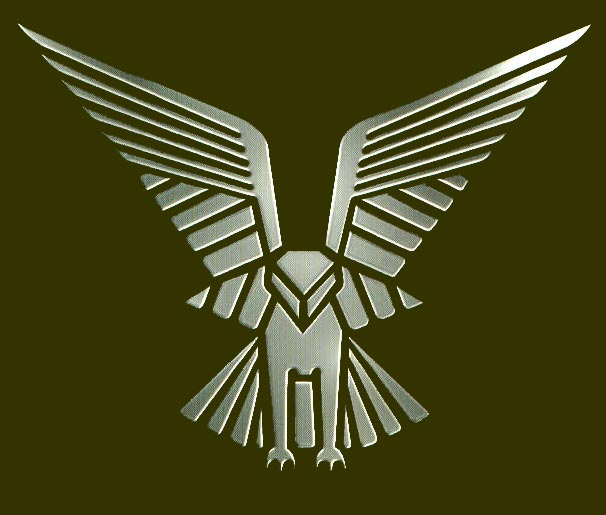




|
|
|
|
TRACKING FOR SURVIVAL
As a Scout, your knowledge of tracking will enhance your awareness, increases
your ability to gather intelligence, and sharpen your bushcraft. If you are in
command during extended border operations, a tracking capability will enable you
to build an accurate map of the localized enemy movement with out having to send
out large amounts of patrols. Good trackers
are rare. When they are needed for military purposes, commanders usually employ
hunters from the local indigenous population. But this does not mean that
soldiers cannot track; some of them are among the world’s best trackers. A
tracker is a reader of ‘sign’. He takes a few faint pieces of information
and, by the process of deduction and comparison with previous experience, puts
the puzzle together. The more
experience the tracker has, the better able he is to do the job. But he must
still beware the following: 1 Lack of confidence
Even the best trackers use intuition, and a tracker must know when to trust a
hunch. With lives at stake, lack of confidence can cloud your ability to think
straight. Experience is the only solution. 2 Bad weather
‘Sign’ does not last for ever. Wind, rain and fresh snowfall will all
obliterate it: many a trail has gone cold 3 Non-track conscious personnel
By the time trackers are called in to follow a trail, the clues at the proposed
start have usually been destroyed by clumsy feet. If you are fortunate enough to
work with a team that can recognize ‘sign’, even though they 4 Unsympathetic commander
Tracking is a solitary business, requiring great concentration. A tracker must
have the trust of the commander, and must be able to trust his cover Try to allow
the tracker time to impart a rudimentary knowledge of tracking to his cover
group, and make sure the cover group are all patient men: the tracker has the
challenge of the trail to hold his attention, but the cover and support group
does not. If they make any noise, it is the tracker who is at greatest risk. Learning to track Tracking is
not a particularly difficult skill to learn, but it needs dedication and much
practice. Once you have learned the basic principles and Teaching yourself is not easy. The biggest mistake you can make is to ‘run before you can walk’: for at least your first 50 hours, follow simple trails, concentrating on accurately interpreting the ‘sign’. Then gradually increase the difficulty of the trails. When you have 100 hours under your belt, you should be following fairly difficult trails.
Becoming sign-conscious The first skill of a tracker is the most important one you will learn: becoming sign-conscious. There is no quick way to achieve this. As you go about your everyday business, try to notice footprints, tracks, fingerprints, hair and other signs. At first this will be a contrived activity, but with perseverance you will begin to notice these fine details in the overall pattern around you without thinking about it. When this happens, you are ready to start tracking.
Reading ‘sign’ You’re
unlikely ever to find a string of ‘Man Friday’ footprints. Instead you will
have to follow a trail of scuffs, creased leaves, bruised grass stems, hairs and
occasionally part of a footprint. If you are
lucky enough to find a clear print, study it carefully to glean as much
information as possible about the target. Compare it with your own to determine
the target’s size, sex, age, weight (load or no load), speed of travel, and
whether he is fit or exhausted. You must also
be able to read animal signs, even when tracking people. For example, a human
track with a badger print on top of it will show that the track was made before
the badger was active at night. If you Animal tracks
may also lead you to a rubbish or food cache, providing you with crucial
information regarding the target’s state of mental, moral and physical
well-being. Attributes of a tracker Tracking is
mainly a visual skill. Your eyesight, whether you wear glasses or not, must be 20/20.
Shortsighted
people often seem to make good trackers once their eyesight is corrected. A general
ability to observe is not enough for tracking: you have to piece information
together, like Sherlock Holmes. You must also be patient, persistent and
constantly questioning your own theories, especially if you are ‘solo
tracking’. Very often,
you will trail your target to within touching distance. To reduce risks, self-defense
and close-quarter battle skills are vital. Although
modern equipment plays an important role in the task of tracking, remember
that it does not replace your tracking ability: it just makes life easier. Clothing and equipment A tracking
team must be totally self-sufficient and capable of operating as an independent
unit. Communications equipment and plenty of supplies and ammunition must be
carried. Tracking can often be a slow process, so everyone must be warm,
windproof and waterproof. The tracker’s load is normally carried by the support team, leaving him with only his belt kit. Make arrangements for his kit to be dropped where he can reach it at the first sign of trouble. Using the Light
Now that
you have become more
sign-conscious, you must learn to maximize your chances of
seeing sign.
To see
the greatest
detail in a clear print you need contrast: this means the light striking the
ground at a low angle. Normally, this means that you are limited to tracking
when the sun is low in the sky, during the morning hours and in late
afternoon/early evening. Around midday the light is almost directly overhead and
casts a flat light, which makes ground features disappear. However, time will
usually be against you in most live tracking situations, forcing you to continue
through the midday and sometimes even into the night. In this case you will need
to make use of techniques that have been devised to control the light conditions
to your advantage. Daylight tracking When the sun
is low in the sky, you can take advantage of the light just by positioning
yourself correctly: make sure the track is between yourself and the light source
by watching the shadows cast by your tracking stick. Probably the most common
error of novice trackers is to align themselves incorrectly. When you are
sign-cutting (searching for sign, normally aiming to cross the target at 900),
getting into the correct position relative to the sun is vital, but can pose
problems. If the target is moving directly away from the sun, to ‘follow up’
you will have to look back over your shoulder. This must be practiced, as it
takes some getting used to. If you have to
follow up through the mid-day period, you will have to slow down and be more
careful, which is more tiring. Ideally your commander will use several trackers
and rotate them at point duty. You may be
able to gain some lighting advantage by using your torch. A Night tracking Night tracking is not always possible; it depends on the local ground conditions. Because you will be using artificial light you can precisely control the light angle. Wherever possible, try to position your light source low and with the track between yourself and the light. A torch with a variable focus beam can be advantage. If you are using vehicles on dirt roads fit them with tracking lights, set to point sideways, crating contrast lighting. Night tracking should play an important part in your training program as it helps to reinforce your use of light and enhances your ability to notice sign. Study clear prints as well as faint sign, and experiment with the light angle and beam focus until you feel you have the correct combination. At night your ability is servely handicapped by the change of colors to monochrome. In tactical situations follow-ups usually only continue at night when a life is at risk or there is a high probability of changing of changing weather conditions obliterating the sign. Light is vital to the tracker. The best times to track are early morning or late afternoons, where the low angle of the sun brings up the track. It is possible to track using artificial light by securing a torch to the end of your tracking stick and holding the torch on one side of the track while you read it from the other. Here, poor lighting could result in the target being lost. This position is know as the LPC (last point of contact).
Tracking on a slope Many novice trackers fail to notice that the ground conditions are changing from flat to slope because they are too wrapped up in the sign: even the very gentlest slope will dramatically affect the lighting conditions, sometimes not. There is little you can do except to be aware of the situation. Moisture
can often make tracking easy.
Dew that collects on surfaces, particularly plant foliage, will normally reflect
light well. Places where a target has stepped will usually show as dark patches
if he flattened down the vegetation before the dew settled, because the light
will reflect off these patches at a different angle from the surrounding
vegetation. However, if he passed by after the dew settled it will have been
wiped off the vegetation. On hard, flat
surfaces such as rock, moisture can reveal the prints of the target as light
patches. The dust on the surface will darken with moisture, but he will have
removed dust by treading and so the moisture will not collect so easily. Remember,
don’t just watch the ground. Sign can be left by any part of the body: for
instance moisture missing on a shrub may give you an accurate indication of the
target’s height. Tracking by feel You will
usually be tracking by sight, but you may find yourself in situations when a
track cannot be seen A track in
short grass is an example. When a foot treads on grass, the grass is flattened
and sometimes broken, By very light and careful probing with the tips of your two little fingers, you will be able to detect these blades of grass by a resistance to your probing. Compare this with the surrounding area. With care, you should be able to discern the overall shape of the track. Tracking
through low cover Other signs Do not make
the mistake of looking only at the ground. Search also for other signs such as
bruised vegetation, scuffed roots, broken cobwebs, pebbles turned to expose
their darker, damp underside, and the smallest of details such as grains of sand
deposited on large pebbles by the target’s boot. To become a successful tracker you must pay attention to all of these factors all of the time. These signs combine with the tracks to fill in the missing details in the mental picture you are building of your target. In a tactical situation, your life and those of your teammates may depend on your noticing a few grains of sand. (END)
|
|
|